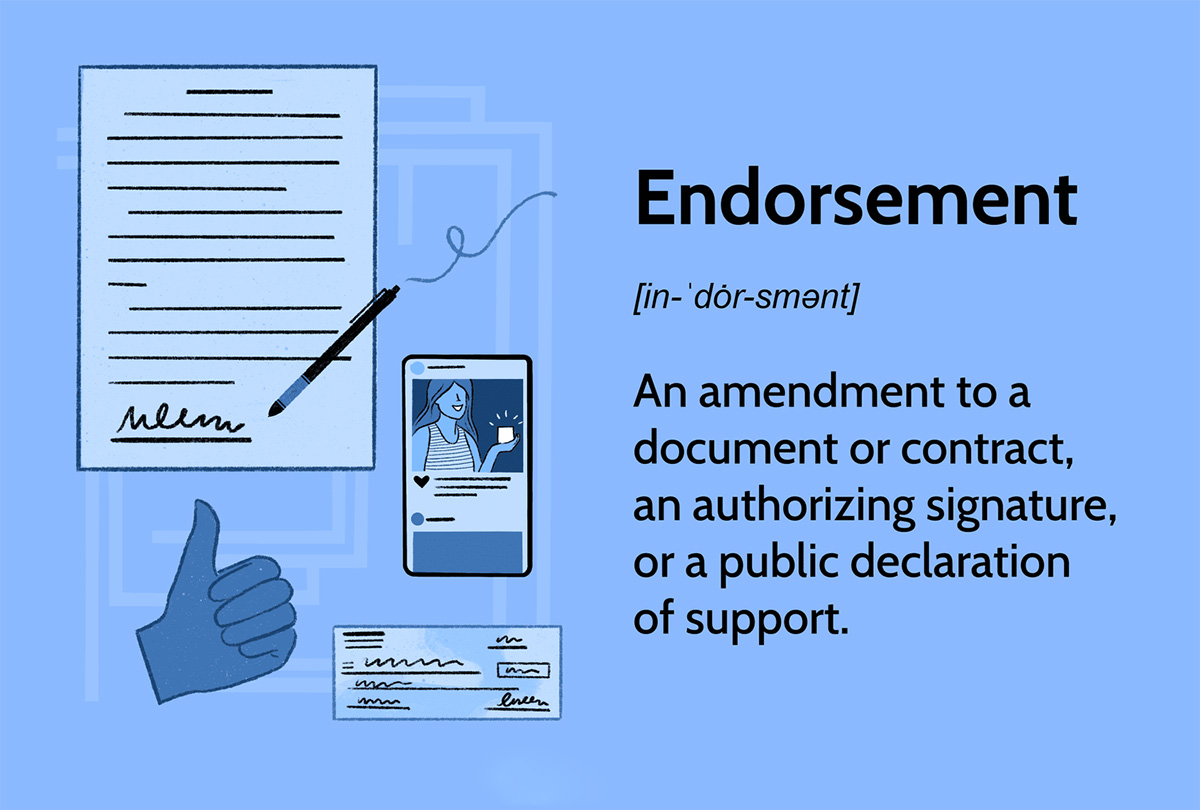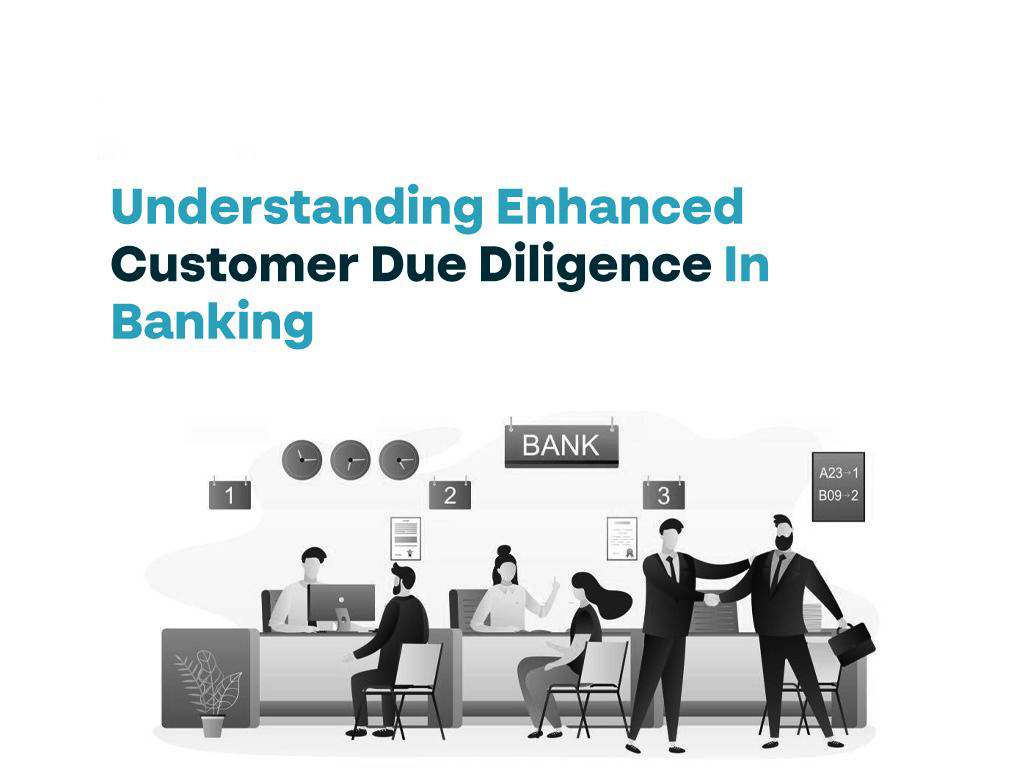

Finance
What Is RTGS In Banking
Published: November 2, 2023
Discover the meaning of RTGS in banking and how it revolutionizes financial transactions. Explore the benefits and importance of RTGS in the world of finance.
(Many of the links in this article redirect to a specific reviewed product. Your purchase of these products through affiliate links helps to generate commission for LiveWell, at no extra cost. Learn more)
Table of Contents
Introduction
In the world of modern banking, technology plays a crucial role in ensuring efficient and secure financial transactions. Real-Time Gross Settlement (RTGS) is one such technological marvel that has revolutionized the way money moves between banks. RTGS provides a faster, more reliable, and transparent method of transferring funds compared to traditional payment systems.
RTGS is a payment system where transactions are settled on an individual basis, in real-time, and without any netting or batching. This means that each transaction is processed and settled immediately, with funds being transferred from one bank to another in real-time.
The advent of RTGS has significantly improved the speed and efficiency of payments. It enables banks and financial institutions to settle high-value transactions promptly, eliminating the need for manual processing and reducing the risk of errors and delays.
In this article, we will delve into the intricacies of RTGS in banking. We will explore how RTGS works, its benefits, challenges, and limitations, along with a comparison to other payment systems. Additionally, we will examine a real-world case study of the implementation of RTGS in a bank and discuss future developments in the field.
So, let’s embark on this journey to understand the inner workings of RTGS and its impact on the banking industry.
Definition of RTGS
Real-Time Gross Settlement (RTGS) is a payment system used by banks to settle high-value and time-critical transactions. It allows for the immediate and secure transfer of funds between different banks within the financial network. Unlike other payment systems that involve netting or batching, RTGS settles transactions on an individual basis, ensuring that each transaction is processed and settled in real-time.
In an RTGS system, funds are transferred in a “gross” manner, meaning that each transaction is settled independently, without offsetting against other transactions. This ensures that the funds are moved immediately and the settlement is done on a one-to-one basis. The funds are credited to the recipient’s account instantly, providing a fast and efficient method of payment.
RTGS systems operate on a secure and sophisticated messaging network, enabling banks to exchange payment instructions and validate the availability of funds. This ensures that the transfers take place in a safe and reliable manner, maintaining the integrity of the financial system.
One of the key features of RTGS is that it is typically used for high-value transactions. There is usually a minimum threshold for the amount of funds that can be transferred using this system, which varies across different countries or regions. This threshold helps to ensure that RTGS is reserved for large-scale financial transactions, where the immediate transfer of funds is of utmost importance.
Furthermore, RTGS systems often operate during specific business hours, allowing banks to process and settle transactions within the designated timeframe. This ensures that the funds are transferred promptly and minimizes any potential delays in the payment process.
Overall, RTGS is a vital component of modern banking infrastructure, providing a real-time, secure, and efficient method of settling high-value transactions between banks. It plays a critical role in facilitating economic activities, such as interbank transfers, stock exchange settlements, large corporate transactions, and government fund transfers.
How RTGS Works
RTGS operates through a complex network of banks and financial institutions that are connected electronically. The process involves several steps to ensure the secure and timely transfer of funds:
- Initiation of Payment: The sender initiates a payment request through their bank, providing details such as the recipient’s account number, bank name, and the amount to be transferred.
- Verification and Validation: The sender’s bank verifies the availability of funds in the sender’s account and performs necessary security checks. If the account has sufficient funds and the request is valid, the transaction proceeds to the next step.
- Payment Settlement: The sender’s bank sends a payment instruction to the central RTGS system, specifying the recipient’s bank details and the amount to be transferred. The central RTGS system authenticates the payment instruction and validates the availability of funds in the sender’s account.
- Interbank Communication: The central RTGS system communicates with the recipient’s bank, providing the payment instruction and requesting the transfer of funds. The recipient’s bank verifies the payment instruction and ensures that the recipient’s account is ready to receive the funds.
- Funds Transfer: Upon successful verification and validation, the central RTGS system instructs the sender’s bank to transfer the funds to the recipient’s bank. The sender’s bank debits the sender’s account, while the recipient’s bank credits the recipient’s account in real-time.
- Notification and Confirmation: Once the funds transfer is completed, both the sender and recipient banks generate electronic notifications to inform their respective account holders about the transaction. These notifications provide essential details such as the transaction reference number, amount transferred, and the date and time of the transaction.
It’s important to note that RTGS operates on a one-to-one basis, settling each transaction individually. This ensures that the funds are transferred immediately and that the settlement is done in real-time without any netting or offsetting against other transactions.
Furthermore, RTGS systems incorporate robust security measures to safeguard against fraud and unauthorized access. Banks and financial institutions employ encryption technology, firewalls, and multi-factor authentication to protect the integrity and confidentiality of the payment information being exchanged.
Overall, the RTGS process ensures the swift, secure, and transparent transfer of funds between banks. It allows for immediate settlement of high-value transactions, providing banks and their customers with a reliable mechanism for conducting financial transactions in real-time.
Benefits of RTGS in Banking
Real-Time Gross Settlement (RTGS) brings a multitude of benefits to the banking industry, improving the efficiency, security, and reliability of financial transactions. Here are some key advantages of RTGS:
- Speed and Real-time Settlement: One of the primary benefits of RTGS is that it enables immediate settlement of payments. Funds are transferred in real-time, ensuring that the recipient’s account is credited instantly. This eliminates the need for lengthy processing and waiting periods associated with traditional payment systems.
- Reduced Counterparty Risk: With the instantaneous settlement feature of RTGS, there is a significant reduction in counterparty risk. Since transactions are settled individually and on a gross basis, both the sender and recipient have the assurance of receiving or delivering funds immediately, minimizing the default risk.
- High Security: RTGS systems incorporate robust security measures to protect against unauthorized access and fraud. This includes encryption technology, firewalls, and multi-factor authentication, ensuring the confidentiality and integrity of payment information. The secure nature of RTGS enhances trust between banks and promotes secure financial transactions.
- Improved Cash Flow Management: The instant settlement provided by RTGS allows businesses and individuals to have better control over their cash flow. By knowing that funds are received in real-time, organizations can make accurate and timely financial decisions, manage their liquidity effectively, and reduce the need for costly credit lines or borrowing.
- Facilitates High-Value Transactions: RTGS is specifically designed for high-value and time-critical transactions. It provides a reliable and secure platform for banks to settle large-scale financial transfers, such as interbank transactions, stock exchange settlements, corporate payments, and government fund transfers.
- Transparency and Auditability: RTGS systems offer transparency in transaction processing, providing detailed audit trails for each payment. This allows for easier tracking, reconciliation, and monitoring of payment flows, enabling better regulatory compliance and reducing the risk of financial discrepancies.
The benefits of RTGS extend beyond the banking sector. The swift and secure transfer of funds enhances economic efficiency by enabling seamless flow of transactions, promoting faster trade settlements, and facilitating economic growth.
Overall, RTGS plays a pivotal role in streamlining and modernizing the banking system, providing numerous advantages to banks, businesses, and individuals alike. Its speed, security, and reliability make it an essential tool for facilitating high-value transactions and fostering financial stability in today’s fast-paced digital era.
Challenges and Limitations of RTGS
While Real-Time Gross Settlement (RTGS) offers numerous advantages in the banking industry, it also faces certain challenges and limitations that need to be considered. Here are some key challenges and limitations of RTGS:
- Cost of Implementation: Implementing and maintaining an RTGS system can be a significant financial burden for banks. Building the necessary infrastructure, integrating with other banking systems, and ensuring compliance with regulatory requirements can entail substantial costs.
- Operational Complexity: RTGS systems involve complex technology infrastructure that requires a high level of expertise to operate and maintain. Banks need to invest in skilled IT professionals to manage and troubleshoot any technical issues that might arise. Additionally, the complexity of the system can make it challenging for smaller banks to participate in the RTGS network.
- System Downtime: RTGS systems, like any other technological system, are prone to occasional downtime or disruptions. Technical glitches, maintenance activities, or unforeseen events can temporarily disrupt the smooth functioning of the system, affecting the real-time settlement capability and causing inconvenience and delays for banks and their customers.
- Liquidity Management: RTGS requires banks to have sufficient liquidity in their accounts to settle transactions in real-time. This can pose a challenge, especially for smaller banks or during periods of market volatility. Banks need to closely manage their liquidity positions to ensure they can meet the settlement obligations of the RTGS system.
- Limited Accessibility: RTGS systems often have restricted operating hours, typically aligning with the working hours of central banks. This limited accessibility can hinder the ability to settle transactions outside of regular business hours, potentially causing delays for international transactions or urgent payments.
- Dependency on Centralized Systems: RTGS heavily relies on centralized systems controlled by central banks or financial authorities. Any disruptions or failures in these centralized systems can impact the smooth operation of the RTGS network and temporarily halt the settlement process.
Despite these challenges and limitations, it is important to note that RTGS continues to evolve with technological advancements and regulatory frameworks. Efforts are being made to address these limitations and optimize the efficiency and accessibility of RTGS, making it more robust and inclusive.
By recognizing and actively managing these challenges, banks can harness the full potential of RTGS while ensuring the system’s stability, security, and seamless operation.
Comparison of RTGS with Other Payment Systems
Real-Time Gross Settlement (RTGS) is a unique payment system that offers distinct advantages over other payment systems. Let’s compare RTGS with two commonly used payment systems: Automated Clearing House (ACH) and Wire Transfers.
- Speed of Settlement: RTGS provides the fastest settlement among the three systems. Transactions are settled instantly, with funds transferred in real-time. ACH, on the other hand, typically takes one to three business days for settlement, while wire transfers can take a few hours to a day.
- Transaction Size: RTGS is specifically designed for high-value transactions. There is usually a minimum threshold for the amount of funds that can be transferred using RTGS. ACH and wire transfers can handle both small and large transaction amounts, making them more versatile for a wider range of payment needs.
- Availability: RTGS systems typically operate during specific business hours, while ACH and wire transfers are available 24/7. This limited availability of RTGS may cause delays for urgent or time-sensitive transactions that fall outside the operating hours of the system.
- Cost: RTGS transactions generally have higher fees compared to ACH and wire transfers. The immediate settlement and higher security measures involved in RTGS contribute to the higher costs. ACH and wire transfers are often more cost-effective options, especially for lower-value transactions.
- Security: RTGS systems offer a higher level of security compared to ACH and wire transfers. The real-time settlement and robust authentication mechanisms ensure that funds reach the intended recipient without unauthorized access. ACH and wire transfers, while generally secure, may be vulnerable to certain risks such as unauthorized access or delayed transaction reporting.
- Use Cases: RTGS is commonly used for large-scale transactions, such as interbank transfers, stock exchange settlements, and government fund transfers. ACH is widely used for recurring transactions like payroll, direct deposits, and bill payments. Wire transfers are often used for urgent or international transactions where speed and reliability are critical.
It is important to note that the suitability of a particular payment system depends on the specific needs and requirements of the transaction. While RTGS excels in terms of speed, security, and real-time settlement, ACH and wire transfers offer flexibility, accessibility, and lower costs for a wider range of transaction sizes and use cases.
In practice, banks and individuals often utilize a combination of these payment systems based on the nature and urgency of the transaction, aiming to strike a balance between speed, cost, and convenience.
Case Study: Implementation of RTGS in a Bank
Let’s explore a case study on the implementation of Real-Time Gross Settlement (RTGS) in a bank to understand the practical implications and benefits of adopting this payment system.
ABC Bank, a leading financial institution, recognized the need to enhance its payment infrastructure to meet the growing demand for fast, secure, and efficient transactions. After careful evaluation, ABC Bank decided to implement an RTGS system to offer its customers real-time settlement and to improve the overall banking experience.
The implementation process involved several key steps:
- Assessment and Planning: ABC Bank conducted a comprehensive assessment of its existing payment systems and evaluated the technical and operational requirements for implementing RTGS. This included determining the necessary infrastructure upgrades, training requirements, and regulatory compliance measures.
- Infrastructure and Integration: ABC Bank invested in upgrading its technology infrastructure to support the implementation of RTGS. This involved acquiring the necessary hardware and software, as well as integrating the new system with the existing banking systems, databases, and security protocols.
- Testing and Simulation: Before going live, ABC Bank conducted rigorous testing and simulation exercises to ensure the seamless integration and functionality of the RTGS system within the bank’s operations. This involved conducting parallel runs, stress testing, and scenario testing to identify and resolve any potential issues.
- Training and Capacity Building: ABC Bank provided extensive training to its employees to familiarize them with the new RTGS system and its operational procedures. This included training sessions on transaction processing, fraud prevention, customer support, and handling real-time settlements effectively.
- Customer Education and Adoption: To promote awareness and encourage the use of RTGS among its customers, ABC Bank launched an extensive education campaign. The bank conducted seminars, webinars, and personalized communication to educate customers about the benefits of real-time settlements and to guide them through the process of using the RTGS system.
After the successful implementation of RTGS, ABC Bank realized numerous benefits:
- Increased Customer Satisfaction: The real-time settlement capability of RTGS enhanced the overall banking experience for ABC Bank’s customers. They could now transfer funds instantaneously with confidence, improving their financial control and supporting their business and personal financial needs.
- Improved Efficiency and Cost Reduction: RTGS streamlined the payment process for ABC Bank, reducing manual intervention and the associated processing costs. The automation and real-time settlement significantly improved operational efficiency, allowing the bank to process a higher volume of transactions in a shorter time period.
- Enhanced Trust and Credibility: By implementing RTGS, ABC Bank demonstrated its commitment to providing secure and reliable financial services. The real-time settlement and high level of security associated with RTGS built trust among customers, strengthening the bank’s reputation as a safe and efficient financial institution.
This case study highlights the successful implementation of RTGS in ABC Bank, showcasing the transformative impact that real-time settlements can have on a bank’s operations, customer satisfaction, and overall efficiency. As the demand for faster and secure payment solutions continues to grow, RTGS proves to be a valuable addition to a bank’s infrastructure.
Future Developments of RTGS in Banking
Real-Time Gross Settlement (RTGS) has already revolutionized the banking industry with its speed, security, and efficiency. However, there are ongoing advancements and future developments in RTGS that hold immense potential for further transforming the way financial transactions are conducted. Here are some key areas of future development:
- Extended Operating Hours: Many RTGS systems currently operate during specific business hours. However, there is a growing demand for round-the-clock settlement capabilities. Future developments may focus on extending the operating hours of RTGS systems to cater to global markets and facilitate 24/7 cross-border transactions.
- Instant Cross-border Payments: Cross-border payments often involve multiple intermediaries and lengthy settlement times. Future developments of RTGS may aim to enhance interoperability between different RTGS systems around the world, enabling faster and more efficient cross-border transactions with real-time settlement.
- Integration with Emerging Technologies: RTGS can benefit from emerging technologies such as blockchain and distributed ledger technology (DLT). These technologies have the potential to simplify payment processes, increase transparency, and reduce costs. Future developments may explore the integration of RTGS with blockchain or DLT to enhance the security and efficiency of transactions.
- Enhanced Data Analytics: The transaction data generated through RTGS can provide valuable insights for banks and regulatory authorities. Future developments may focus on leveraging advanced data analytics and artificial intelligence to analyze transaction patterns, predict financial risks, and detect fraudulent activities more effectively.
- Improved Accessibility: Future developments of RTGS may aim to increase the accessibility and participation of smaller banks and financial institutions. This could involve the development of simplified and cost-effective RTGS solutions that cater to the specific needs and capabilities of smaller players in the market.
- Enhanced Security Measures: As cyber threats continue to evolve, future developments of RTGS will prioritize strengthening security measures. This may include the implementation of advanced encryption techniques, biometric authentication, and real-time risk monitoring to mitigate the risk of fraud and unauthorized access.
The future developments of RTGS hold significant promise for the banking industry, offering improved efficiency, expanded capabilities, and enhanced customer experiences. As technology continues to advance, we can expect RTGS to evolve with it, adapting to the changing needs of the global financial landscape.
Ultimately, these developments will reinforce the position of RTGS as a vital component of modern banking infrastructure and a crucial enabler of seamless, secure, and real-time financial transactions.
Conclusion
Real-Time Gross Settlement (RTGS) has emerged as a game-changer in the banking industry, providing a fast, secure, and efficient method of settling high-value transactions. This article has explored the intricacies of RTGS, including its definition, how it works, and its benefits, challenges, and limitations.
By settling transactions in real-time on an individual basis, RTGS offers immediate funds transfer, reducing counterparty risk and enhancing liquidity management. The system’s high level of security and transparency instills trust and fosters economic efficiency. However, the implementation of RTGS requires significant investment in infrastructure, and its limited operating hours may pose accessibility challenges.
In the ever-evolving landscape of payments, RTGS continues to adapt and improve. Future developments in RTGS hold vast potential, including extended operating hours, instant cross-border payments, integration with emerging technologies, enhanced data analytics, improved accessibility for smaller institutions, and reinforced security measures.
As we move forward, it is crucial for banks to embrace these developments and leverage the benefits of RTGS to stay competitive and meet the evolving needs of their customers. The implementation and utilization of RTGS can enhance efficiency, reduce costs, improve cash flow management, and ultimately provide a superior banking experience for both institutions and individuals.
In conclusion, Real-Time Gross Settlement is not just a payment system; it is a catalyst for transformation and progress in the banking industry. By facilitating real-time, secure, and efficient transactions, RTGS paves the way for a more connected, reliable, and vibrant financial ecosystem.














